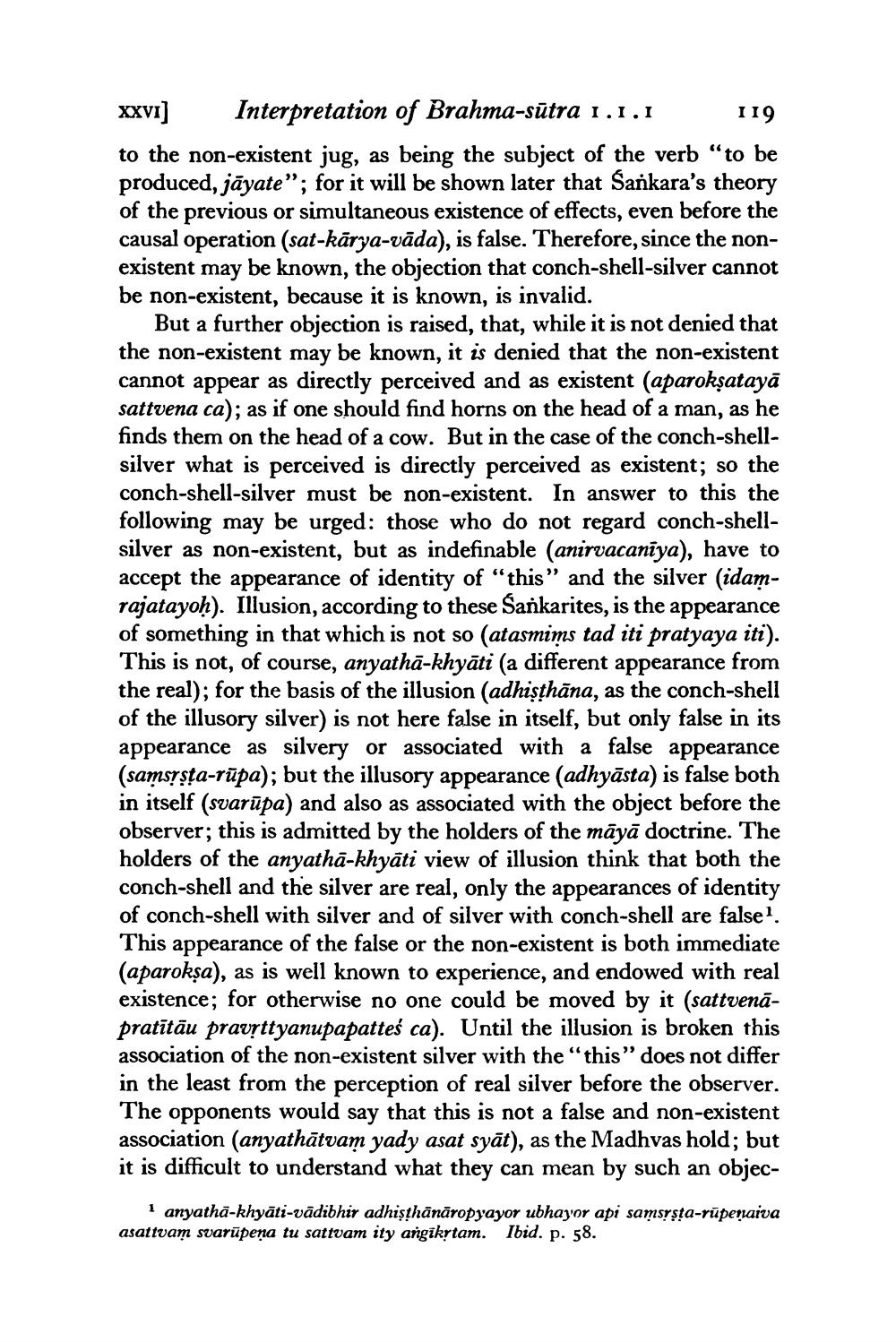________________
XXVI] Interpretation of Brahma-sūtra 1.1.1 119 to the non-existent jug, as being the subject of the verb "to be produced, jāyate"; for it will be shown later that Sankara's theory of the previous or simultaneous existence of effects, even before the causal operation (sat-kārya-vāda), is false. Therefore, since the nonexistent may be known, the objection that conch-shell-silver cannot be non-existent, because it is known, is invalid.
But a further objection is raised, that, while it is not denied that the non-existent may be known, it is denied that the non-existent cannot appear as directly perceived and as existent (aparokşatayā sattvena ca); as if one should find horns on the head of a man, as he finds them on the head of a cow. But in the case of the conch-shellsilver what is perceived is directly perceived as existent; so the conch-shell-silver must be non-existent. In answer to this the following may be urged: those who do not regard conch-shellsilver as non-existent, but as indefinable (anirvacanīya), have to accept the appearance of identity of “this" and the silver (idamrajatayoḥ). Illusion, according to these Sankarites, is the appearance of something in that which is not so (atasmims tad iti pratyaya iti). This is not, of course, anyathā-khyāti (a different appearance from the real); for the basis of the illusion (adhisthāna, as the conch-shell of the illusory silver) is not here false in itself, but only false in its appearance as silvery or associated with a false appearance (samsysța-rūpa); but the illusory appearance (adhyāsta) is false both in itself (svarūpa) and also as associated with the object before the observer; this is admitted by the holders of the māyā doctrine. The holders of the anyatha-khyāti view of illusion think that both the conch-shell and the silver are real, only the appearances of identity of conch-shell with silver and of silver with conch-shell are false! This appearance of the false or the non-existent is both immediate (aparokşa), as is well known to experience, and endowed with real existence; for otherwise no one could be moved by it (sattvenāpratītāu pravịttyanupapatteś ca). Until the illusion is broken this association of the non-existent silver with the “this" does not differ in the least from the perception of real silver before the observer. The opponents would say that this is not a false and non-existent association (anyathātvam yady asat syāt), as the Madhvas hold; but it is difficult to understand what they can mean by such an objec
1 anyathā-khyāti-vādibhir adhisthānāropyayor ubhayor api samsrsta-rūpenaiva asattvam svarūpena tu sattvam ity angikytam. Ibid. p. 58.




